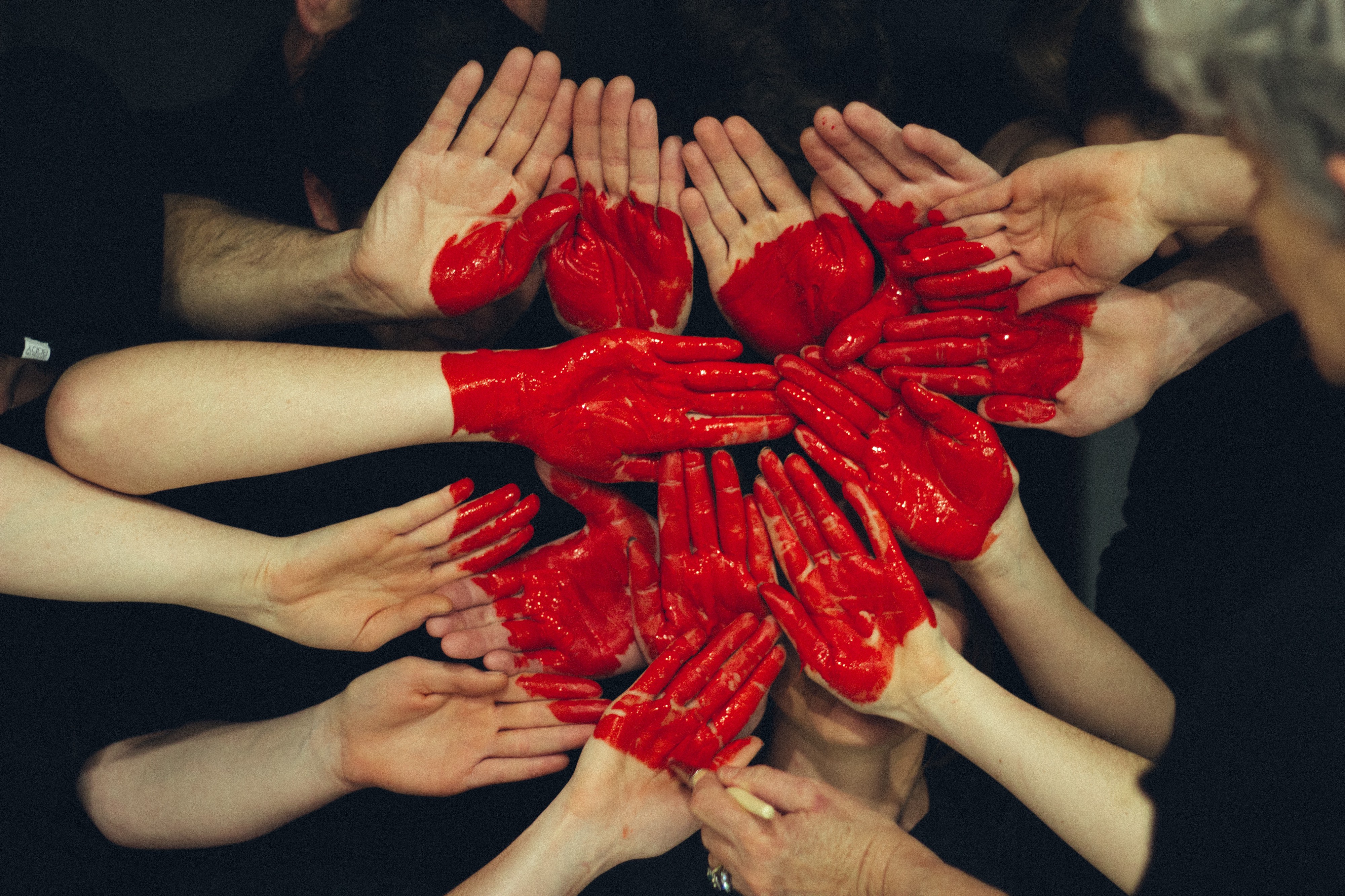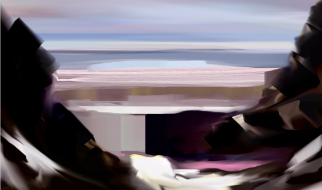Have you ever noticed how synchronized your reactions are with the person you talk to? A common human behavior classified as ?mirroring? has been known and studied by psychologists for a long time.
We all tend to mimic gestures of people we like and we do it subconsciously. But why do we act like this? Is there any special reason for that?
As a rule, mirroring means that interlocutors enjoy their communication. There?s a certain level of agreement between them. The topic of discussion is equally interesting for both people and they know that their interests meet.
Tuning your own mood and actions to others can be traced back to human origins. People used mirroring as a kind of universal signal. In order to survive and evolve, humankind had to learn and invent many things including socially accepted behavior.
There were stronger, smarter and more honored individuals in the human society. These were the ones with a higher social status. All the others had to develop certain behavioral patterns to show their respect and honor to the strongest. For example, if such an honored man wore a handkerchief as a decorative accessory, the rest of the group would consider it to be trendy and an absolute must for them to wear too.
Scientifically speaking
So how does science explain mirroring in communication? That?s all because of a neuron; the one responsible for recognizing faces and understanding their expressions.
This neuron makes you intensely frown your brows or put on a smiley face when it interprets the emotions of the person you communicate with. And it is this neuron that made you repeat actions and make faces before you were even able to talk.
Have you ever experienced a sudden rise in mood when surrounded by funny people? Do pessimistic personalities make you feel down in the dumps? Then, you have well-developed sympathy and your neuron is functioning properly.
Mirroring impact on your daily life
Yawning. A perfect example of the action we can?t resist. Some scientists point out that only sociopaths are immune to contagious yawning.
Sadness. When people around us, even strangers, are sad, we become moody too.
Laugh. Even if we hear some lame joke and see that everyone else is laughing, it makes us giggle too. The laugh is contagious, even without any reason. Make an experiment and listen to someone laughing for a minute on Youtube, eventually, you?ll be the last to stop.
Disgust. The anterior brain fraction gets activated even when we notice the expression of disgust on someone else?s face.
Mirror neurons give us the ability to understand each other better, show significance of our relationships and share emotions with other people, building a foundation for empathy.
 Photo by Scott Webb on Unsplash
Photo by Scott Webb on Unsplash
Chameleon effect: factors and dependencies
Education level, innate expressiveness, cultural environment we are raised in. All these factors directly impact our inclination to mirror others. Here are the surprising findings that scientists revealed while trying to understand why some of us do this differently.
Education. Quite unexpectedly they came to the conclusion that education level is also involved. As it turned out, the less educated a person is, the more imitating he or she will be during a conversation.
Personality. In the study by Kurzius, E. published in Journal of Individual Differences there is a statement that extroverts tend to mimic others more because being liked by others is their priority in contrast to introverts.
Genders. It is believed that women are more inclined to imitations than men and that both genders do it differently. While women are real pros in emotional imitations, men are more focused on their posture and gestures.
Culture. Imitation also depends on some national peculiarities. The national majority of the country is less likely to copy and imitate behavior than the national minority. The general socio-political situation in the country appears to be an even more important factor. Thus, in more conservative, traditional and patriarchal cultures, imitation is more frequent than in liberal ones.
The experiment
According to the study carried out by the University of California, (LA) our brain is wired for responding differently to people depending on the culture they belong to.
There were two participants in the study coming from US and Nicaragua. Both were showing particular gestures to the group under examination (US residents) while special equipment was fixing the strength of signals in the brains of watchers. The neurons of the understudied group responded much more actively to the gestures of an American actor than to those of Nicaraguan.
The survey shows that we are more willing to understand and experience empathy towards people of our nationality or culture.
 Photo by Tim Marshall on Unsplash
Photo by Tim Marshall on Unsplash
The story of a stolen identity
Repeating someone?s behavior is typical for talented communicators, not always because the person is sympathetic, but because a certain goal should be achieved. This way society has brought their new idols to the stage: politicians, celebrities, and other big names. The popular culture made people want to look popular, act like popular people and speak like them.
Prestige doesn?t come easy. The inner striving of people to be valued by others is now actively used for commercial purposes and advertising industry. Numerous psychological studies prove, the thing said is far more likely to gain trust and respect if it is associated with somebody well-known, popular or respected.
In fact, the experts point out that even the greatest authors borrowed ideas from their fellow writers. Among them were Billy Collins who learned the style of Wallace Stevens and even William Shakespeare who was obsessed with the style of the Roman poet Ovid.
Nowadays celebrities steal lyrics from each other and struggle with copyright violation accusations or straightforwardly claim themselves to be the authors, even though all the work was done by other people.
Among celebrities, it?s trendy nowadays to use their own speech writers similar to politicians. So called ?ghostwriting? can take various forms: books, articles, autobiographies, and even tweets. Kourtney Kardashian, Nicole Polizzi, and Lauren Conrad, just to name a few, were among myriads of those, who ?wrote? their books that way as stated by the NY Times.
Who is a true copycat and who gets copycatted? Sometimes, it is a tough nut to crack without an expert?s help. But new authorship defending methods based on identifying individual writing patterns are already here. Their aim is to protect intellectual property. Using stylometric methods, some of them showcase state-of-the-art results defining authorship with 85% accuracy. One of them is newly discovered Emma Identity, AI that is already available in its beta version and ready to attribute authorship.
Precautions you need to take
Writing is not an easy craft to master. If you want to write like a pro without plagiarism, there are a few lessons to learn and the first of them is: ?Copy from one, it?s plagiarism; copy from two, it?s research.? The correct interpretation of this statement is not about copying, but rather about creating your own style.
When you study an author?s writing style, don?t stop on the single one, explore numerous styles instead. Examine types of sentences they use, pay attention to their metaphors, and focus on stories you feel you could write a pretty cool sequel to.
If you?re still too afraid of violating someone?s copyright and copying the thoughts of others by mere accident, here is a list of helpful sources for writing original, interesting, and useful content:
1. Acknowledge the author of the source even if there are no copyright signs or watermarks and learn the answers to the most frequently asked questions about it.
2. If you need a kind of scientific proof, make use of Wolframalpha. It explains numerous definitions.
3. Take advantage of open access databases with images, videos, and other materials available for free use. They usually allow using their content even without attribution. Such sources as Unsplash.com, Picography.co, and Pexels.com are among them.
4. Use plagiarism checkers. To find unoriginal text inside your work may turn to be rather time-consuming, which is why it makes sense to find a tool like Unicheck that delivers accurate search results and is easy to use.
5. To make sure the image you?re going to use hasn?t been posted anywhere else, simply right-click on it and choose search Google for image. Google will show you online sources that already use this picture. If you need to check some image details like copyright, try to use Findexif for that.
To sum up
Imitation is rather contradictory. On the one hand, it brings about positive changes making people develop and compete.
On the other hand, copying seems to be an integral part of learning. However, it may do a lot of harm too. Copying someone?s thoughts, ideas or inventions is completely unacceptable. It infringes on intellectual property rights of others.
Still, many things that we do are about copying others one way or the other. So if you want to compliment someone on the work done and recycle or imitate it, just make sure you do it the right way to avoid committing plagiarism.


